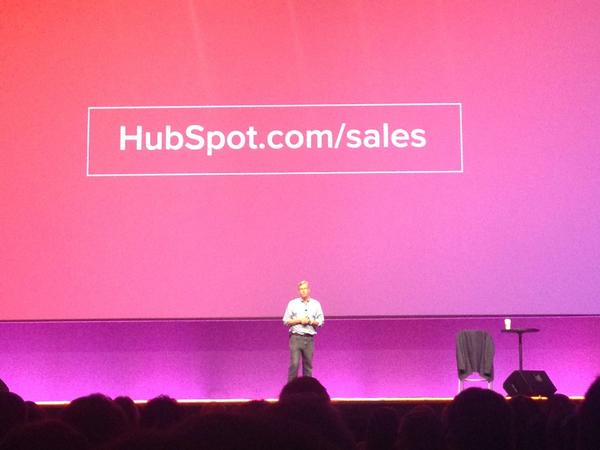
Our Hands-on with the HubSpot Sales Platform

The CRM has long been a staple of the modern sales organization. It allows salespeople to track their progress and maintain relationships with existing customers. If used effectively, a CRM can predict the future financial performance of an entire company.
As a software product, it’s earned its place as the centerpiece of most marketing and sales organizations. One central database that holds all your customer data? That can provide a lot of value for many companies.
The original CRM was built with the sales manager in mind. Salespeople log their activities so that a supervisor can see what they’re doing. But using their time this way keeps them from doing what they do best - selling.
Announcing HubSpot’s Sales Platform

This is what makes HubSpot’s new sales platform so exciting. It provides the traditional reporting of a CRM while making tracking sales activity unnecessary. The result is a tool that benefits the whole sales team.
HubSpot’s new sales platform consists of two different tools: the CRM and Sidekick. Each one helps salespeople in a different way, and enables them to sell more efficiently.
HubSpot built its marketing tools to reflect the changing way people buy things. The CRM and Sidekick tools reflect that philosophy. HubSpot’s CEO, Brian Halligan, put it like this:
"The traditional sales process in broken. Instead of 'always be closing,' the next generation of sales leads will 'always be helping.'”
The modern salesperson has to adopt the mindset of a sherpa: someone who’s willing to help you along your journey. They have to realize that the customer drives the conversation and the decision. Salespeople who are still stuck in the "always be closing" mindset will be left behind.
Sidekick
Last year, HubSpot announced their first-ever sales product: Signals, a lightweight sales intelligence tool. It tracked email to let you know if the recipient had opened or clicked on your message. This year, it’s getting rebooted as Sidekick, a tool supercharges your inbox and makes prospecting a breeze.
Building on Signals' email tracking features, Sidekick shows up as a sidebar in your inbox. Here, you can see all sorts of data about your contacts, including social activity and company stats.

This sidebar can also be pulled up while browsing a prospect's website. When used in this way, it will show basic stats about the company, as well as any connections your colleagues may have there. Instead of having to switch back and forth between applications to dig for information, you have it all right at your fingertips.

CRM
Sidekick is powerful, and it ties back into a CRM that keeps all your sales activity in a format that you’re used to. Delve into a contact to see when the last time you spoke with them was. Need to send them an email or calendar invite? You can take care that from within the CRM. Want to give them a call? You can set this up to happen directly from the CRM! It doesn’t even require a new phone number; you can use your existing one.

All your tasks show up in that contact's timeline, along with all the sales and marketing activities you’ve tracked for them. This makes it easy for your sales rep to see all the information available on the contact.
You can easily associate contacts with companies and make deals as you move through your day-to-day activities. You can track your deals in a card format that’s the virtual equivalent of a bulletin board. As a deal progresses, you can just move it from one column to the next.
First Impressions
We’ve been lucky to be beta testing the new CRM for a few weeks. My first impressions of it have been positive. HubSpot’s CRM doesn’t isn't just like every other CRM; it offers something new. It's easy to log in, see what activities you have, send all your emails, and make all your calls from within the CRM. It doesn’t get in the way of your work, and it doesn’t sacrifice any activity tracking either. It’s an impressive solution that is sure to have salespeople take stock of all the information that marketing generates.
The sales-marketing integration is really the killer feature here. The HubSpot-Salesforce integration is impressive, and the company is dedicated to that for the foreseeable future. But having one system that does the work of two is always going to be easier to maintain, and provides a lot of advantages. Marketing and sales information are given equal weight in the system, and the information is all pulling from one central database. Bi-directional syncing is a great idea in theory, but it still presents challenges that really take a Salesforce admin to handle. By pulling from the same application, there’s a big advantage in maintenance alone.
Is it right for me?
The critical question. Luckily, you don’t have to choose. For companies without a CRM, the HubSpot CRM will be free. You can try it out and see. For many small to mid-size companies, I’m betting that it will work well for their purposes.
For companies with Salesforce already in place, the features come to you by way of a sales accelerator tool that brings the power of Sidekick and the CRM to your existing set-up.
The important thing is that this brings about better marketing-sales alignment. For many companies in competitive industries, being able to share information between departments can be a huge advantage. As both departments grow more sophisticated, leveraging them together allows for true “smarketing” can create big wins for your company.
Ready to learn more? Click below to get on the waiting list for the CRM and become one of the first people with it once it becomes available.









